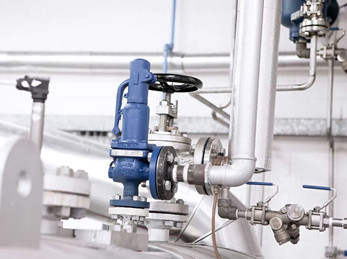When should you use a safety valve? When should you use it to prevent an accident? Read on to learn more. Safety valves are an important part of many machines, including boilers, heat exchangers, and air conditioning systems. They can be installed in a variety of applications, including HVAC, industrial, and municipal applications. When you are using one, remember that the discharge area is smaller than the flow area. The discharge area is the amount of fluid that flows through the valve.
A safety valve reduces a defendant’s total offense conduct by two points. The federal sentencing guidelines are discretionary, which means a judge can set any sentence they choose, but a higher score corresponds to a higher suggested range. In this case, a two-level difference can mean the difference between months or years. Because each point counts towards the lowest sentence possible, a safety valve can reduce a prison sentence.
When should you use a safety valve? The answer is simple: when the total offense conduct score is higher than the suggested sentence range, it is not appropriate to use a safety valve. While federal sentencing guidelines are not binding, they serve as starting points for judges. The higher a total offense score is, the more severe the sentence and the higher the suggested sentence range. For example, a safety valve of two levels may save a defendant months or even years of their sentence.
A safety valve’s discharge area is determined by its discharge area, which is the lesser of the flow area and the curtain area. When the static inlet pressure exceeds the set pressure, the safety valve disc will lift off its seat. The spring force increases with the pressure. During this process, the safety valve disc lifts from its seat and opens the valve. Depending on the fluid, this process can take a few minutes.
A safety valve also provides relief from pressure. The valve opens slowly when pressure exceeds the setpoint. When it does open, the safety valve releases the pressure. In such cases, the safety valve is the first line of defense in avoiding a catastrophe. To prevent catastrophic failure, safety valves are an essential component in any industrial process. The pressure that safety valves prevent is the difference between life and death. This valve is crucial to the survival of an entire plant, whether in a gas or hot fluid environment.
A safety valve is a device that opens and closes when the pressure inside it exceeds a certain level. It will open when a slight increase in pressure is detected. Its main function is to protect the system from explosions. A safety valve has various uses and is essential to the functioning of a hydraulic system. These are described below. There are several types of safety valves:
The main function of a safety valve is to keep the gas in a pressure vessel below the safe operating pressure. It protects the valve from the explosion. Safety valves must be installed properly and securely to prevent the risk of fire. Proper sizing, proper installation, and maintenance are vital for a safety valve. Below are some important tips for using safety valves in different applications. They may save your life.
The basic design of a safety valve consists of a right-angle pattern valve body and an inlet connection to a pressure-containing system. The valve’s outlet connection may be screwed, flanged, or piped. It may also be equipped with spring buttons to distribute the force of the springs. The valve’s nozzle is the entrance to the process fluid and can be fully threaded or removable. It can also be pressed to close the valve.
